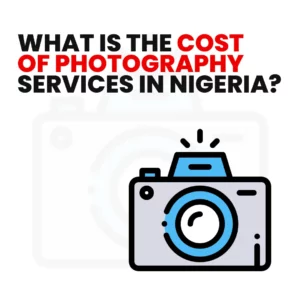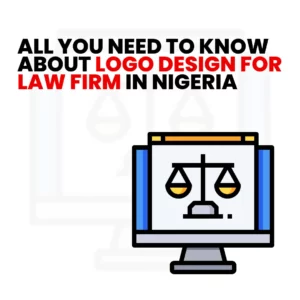When branding or rebranding your firm, your logo is essential. Your logo represents your brand, makes a first impression on customers, and represents your business. This powerful tool can reveal your values and identity. To ensure your logo conveys your business message, you must carefully brief your designer. Providing a detailed logo design brief to a local or international designer is the first step to producing a logo that resonates with your Nigerian audience.
This article covers creating a perfect logo designer brief to help your designer. Learn what to include in your brief and how to interact with your designer.

What is a logo design brief?
A logo design brief is a document or set of directions a client or company gives a logo designer. It is a foundational document that outlines the project’s goals, needs, and expectations. A logo design brief’s primary goal is to ensure that the client and the artist can talk to each other clearly and effectively. This helps both parties understand the scope and objectives of the project.
A well-written logo design brief helps the artist make a logo that fits with the brand identity and goals of the client. It helps both parties work together well during the design process and ensures that the final logo meets the client’s standards.
Essential information to provide in a logo design brief includes;
- Company background: The client’s history, mission, products, and audience.
- Brand identity: Brand values, personality, and USPs. This area helps designers grasp brand essence.
- Design preferences: Client preferences for style, colours, fonts, and logo ideas.
- Practical considerations: Logo placement on websites, business cards, signs, and size/scalability requirements.
- Logo design project schedules, deadlines, and budget.
- Visual references: Logos, design elements, and styles the client likes.
- Law and technology: Copyright, trademark, and logo file format requirements.
Read also: Logo Design for Mobile Apps
Preparing for the logo design brief
You must prepare before briefing your logo designer. Thorough preparation is necessary for a successful collaboration. Below are the steps for preparing a logo design brief;
1. Research
Logos are more than just images—they convey your brand’s spirit. You must grasp your brand’s identity to communicate with your logo designer. How to do it:
- Consider your company’s history, mission, and values. Consider your Nigerian market advantage. Your logo should represent your brand’s essence.
- Examine competitor logos. What works? What doesn’t? This insight might help you differentiate your business in Nigeria’s diversified market.
2. Establish goals
Your logo should serve a purpose beyond aesthetics. It should communicate and engage your audience. To accomplish this, set clear goals:
- Who are you targeting in Nigeria? Understanding your audience’s tastes and expectations will inform logo design.
- What should your logo say? Is it trust, innovation, tradition, or something else? Make sure your logo matches your messaging.
3. Set budget and timeline
Logo design in Nigeria demands a budget and timetable like any other project. Be realistic about your logo design budget and tell your designer. If you have brand launch deadlines or events, a schedule keeps the project on track.
4 key logo design brief elements
After learning the principles of logo design and preparing for the briefing, it’s time to examine the critical aspects of a logo design brief. These components will guide your logo designer to realize your concept. Below are the things the brief must include;
1. Background of Company
Introduce your business to your logo designer. Share crucial company information;
- Give a brief history and mission of your company. This contextualizes brand evolution.
- List the products or services your business offers. This helps your designer understand your market and business.
2. Present brand identity
Your logo should accurately represent your brand. Share brand insights to convey this:
- Discuss your brand’s values and characteristics. Your logo should convey reliability, innovation, or tradition.
- How does your company differ from competitors? To stand out, put your USPs into the logo.
3. Design preferences
Here, you can express your visual choices. Your designer can’t read your mind; they require your input to match your vision:
- Do you want a modern, classic, minimalist, or ornate design? Give your designer style preferences to understand your taste.
- Colour affects mood. Name your favourite colours and explain why they suit your brand.
- Share your font preferences; typography matters in logo design.
- Share your logo ideas with your designer. Visual aids, doodles, and even favourite logos can inspire.
4. Practical considerations
Practicality is crucial in logo design, especially for several uses. Provide valuable details to aid your designer;
- Specify where the logo will appear. Your website, business cards, signage, and social media profiles may have it. Platform size and format requirements vary.
- Discuss the appropriate logo size. It should be visible on a tiny social media profile image or a giant billboard in Nigeria’s busy cities.
How to communicate your needs effectively
After gathering the necessary elements, you must adequately express your logo design brief to your designer. Effective communication ensures that the designer’s creative process matches your vision, creating a logo that symbolizes your Nigerian brand. Here’s how to do this;
- When writing your logo design brief, be direct. Refrain from using technical jargon that may confuse your designer. Imagine your brief as a map: clearer, simpler directions are easier to follow.
- Industry-specific jargon may be unfamiliar to your logo designer. Explain things in simple language. Explain technical jargon to ensure your designer knows.
- A picture is worth a thousand words. Use sketches, mood boards, or photographs to visualize your ideas. These images help your designer understand and provide a concrete reference.
- Although your vision is essential, your logo designer is a creative professional with valuable insights. Listen to their advice. They may suggest new techniques that could boost your logo’s Nigerian appeal.
- Clear communication is mutual. If your brief or preferences are unclear, ask your designer to clarify. Open communication encourages collaboration and keeps both parties on the same page throughout the creative process.
Questions to expect from the designer
Expect a lively discussion as you work with a logo designer to realize your brand concept. Anticipating your designer’s inquiries helps for seamless cooperation. Being ready to answer these questions will improve collaboration. Expect these usual questions;
1. Clarifications on brief
Your logo designer may ask for clarity on your brief. If needed, provide further information about your organization, brand identity, and design preferences. Questions may include:
- Can you describe your brand’s personality and values?
- Can you describe your audience?
- Any explanation behind your colour choices?
- Can you name logos you like and why?
2. Advice and tips
Expert logo designers typically share their knowledge. They may advise ways to improve your logo. These suggestions can help you create a more memorable logo for Nigerians. Questions may include:
- Are you considering Nigerian cultural or heritage elements?
- Are there any colour schemes that appeal to your audience?
- Do you like modern design or traditional?
3. Timeline and milestones
Your designer may ask about your timeframe and milestones to keep the project on track. Clear project timeline expectations assist both parties in managing time. Questions may include:
- Is there a launch date you have in mind?
- How soon do you wish to receive logo concepts?
- Do you want to establish design review points?
You’ll improve collaboration by anticipating and answering these questions from your logo designer.
Read also: 7 Elements of an Effective Business Logo Design
How to choose the right logo designer
Choosing the appropriate logo designer ensures your brand’s visual identity resonates with Nigerians. This creative cooperation may make or break your logo. To make an informed choice, follow these steps;
- Search for logo designers in Nigeria. Look at design portfolios online, on social media, or ask your fellow business owners. Be rigorous in your search and shortlist only designers whose work matches your goal.
- After making your shortlist, carefully evaluate portfolios. Find designs that match your brand. A versatile designer that can adapt their style to different businesses may be better for your needs.
- Discuss project terms with your designer before choosing. Clarify crucial details, such as;
- Understand their pricing and what’s included.
- Talk about project schedules and milestones.
- Decide who owns the final logo design.
- Understand the project’s revision count and request process.
- Establish clear communication and agree on how and when to provide updates.
- Beyond professional skills, consider designer compatibility and communication style. Positive collaboration can substantially affect your logo project. Make sure your designer listens, and you feel comfortable sharing your thoughts.
- Request references from past clients. Past clientele can reveal the designer’s work ethic, professionalism, and project deliverability.
Final thoughts
A logo design brief is essential to communicating your unique needs to your logo designer. I recommend working with a professional logo designer if you need help with logo design or visual branding. I design logos that capture your brand’s personality and resonate with your audience. Please contact me if you’re ready to create a logo that stands out in Nigeria’s crowded market. Let’s create an unforgettable visual identity together.




